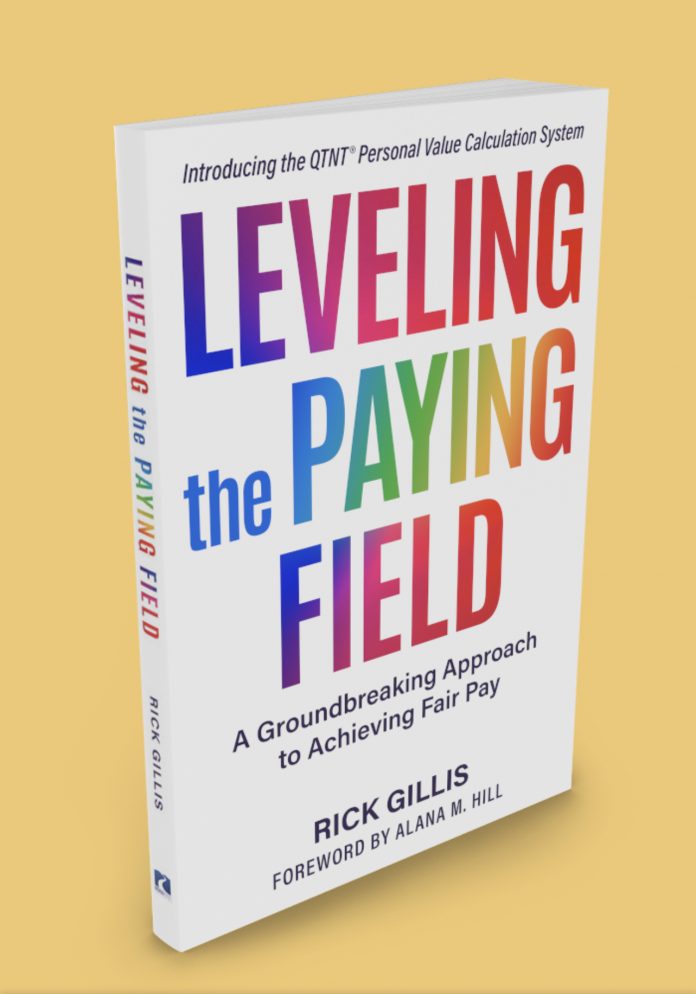
Chapter 19: Equal Pay or the Proper Pay?
Let’s say you, and I work together. We do the same job, but I’m a guy, and you are a woman. Or I’m white and you’re not. Or I’m young and you aren’t. I earn a Quotient1 of 7 for my work this year, and you score a verifiable 23. We do not, at this time, know our respective scores.
A month passes, and you learn that I was promoted—on merit, of course. But then, as such news tends to leak out in any work environment, you hear that my QTNT® score for the previous year was a 7. Would you have some kind of recourse after learning this?
I’m not an attorney, and I have not passed this by one for an opinion. Still, I feel fairly confident stating that—assuming all other qualifications are relatively similar if not equal—the Quotient illuminates the pay disparity issue in such a way that you might want to talk with someone in human resources—or the Equal Employment Opportunity Commission (EEOC).
Equal Pay or the Right Pay?
We hear a lot about equal pay and pay disparity—phrases that have their place and that I will continue to use throughout the book—but I have a different take on the more significant issue: Why are we talking about equal pay when the Quotient can measure a return on investment (ROI) in a way that has never been achievable in the past? Before the QTNT Personal Value Calculation (PVC), we had never been able to mathematically measure the value of a contribution from any employee—woman or man, disenfranchised or not. The Quotient changes all that.
How about, in addition to talking about equal pay, we talk about the appropriate pay for performance? How about we talk about proper pay for the value delivered? What if a woman’s work product is more valuable than a man’s in the same position? Does equal pay make her salary acceptable? I prefer that we—as both individuals and businesses, men and women, protected classes or not—seek fair pay for measurable value delivered. Isn’t this how it works in sales? Yes. But don’t get me wrong: I’m not suggesting non-sales professionals should be paid on a commission-type basis. On the contrary, my goal is to see that everyone learns how they add value to the organization, identify the extra weight they deliver, defend it, and be paid accordingly. Will this take some education? You bet! That’s why I have written this book and why you are reading and learning from it.
How about we modify the discussion somewhat and talk about the proper pay for the value received by the organization? Or, as I personally prefer to define it, the proper pay for the best performance. The Quotient is the defining (and very simple to calculate) determinant when you look at it that way.
As I said above, I’m not suggesting a “commissioned” workforce. The market will determine the lowest rate anyone will be paid for their skills. Nevertheless, I advocate for anyone to have the opportunity to make more than the market floor suggests based on their measurable performance.
To be sure, this idea puts the onus on the employee to point out where she or he adds increased value. I have no problem saying out loud that it is the motivated employee who will benefit from working the QTNT PVC process.
Currently
In spite of legislation that requires equal pay for equal work, women, as I write this, earn approximately 80 cents on average for every dollar a man makes. That rate diminishes even further as a person’s race or age is considered.
The Quotient is more than just an equalizer in the pay discussion. The QTNT PVC has become the gold standard. It is up to the employer to reward those workers accordingly.
Of course, there is more to the discussion of pay equity than just gender. Gender equality is only one of the several groups protected by law from employment discrimination. In fact, per the EEOC, every US citizen is a member of some protected class.
Discrimination of all kinds abounds in the workplace, and unfortunately, due to human nature, it always will. The Quotient may or may not change the way people think, but it will level the playing—or should I say “paying”?—field, no matter what our differences may be.
More pay, appropriate promotion, and bonuses for better work are the goals all individuals strive for. Conversely and appropriately, more production and bigger returns are the corporation’s goals. This is a win-win, as we are all in this together.
Your engagement in the QTNT PVC process—that is, knowing what part you play in the bigger corporate picture and how you can personally quantify your contribution, no matter your role—should, I think, personally spur you on to produce more and provide a better quality of work. This process should also prove to you and management that you already do more and better work than you are being recognized for.
Regarding Individual Rate of Pay
There are many reasonable variables that impact the rate of pay between two workers in the same space (e.g., experience, certifications, education, etc.). Knowing what you make and learning what everyone else around you makes may or may not make any difference. Where it does make a difference is when you learn that your equal-to or superior qualifications, advanced study, and experience are not reflected in your pay when compared to those who do the same work. This is where your engagement with the Quotient is inestimable.
Opening this chapter, I compared myself (a guy) and my score to a woman with a PVC far superior to mine, but I got the promotion. Perhaps that was based on the premise that I will make a better manager. Perhaps not. Maybe it had to do with the fact that I play golf and my coworker doesn’t. Perhaps not…
- QTNT®: An acronym for, and pronounced as, “Quotient,” QTNT describes the process, system, rank, formula, rating, or score used to determine a working person’s value contribution to their employer. (2) The result of the Quotient calculation (C ÷ P = QTNT score where C is the value of a worker’s value contribution to their employer & P is the same worker’s base pay) as utilized by the QTNT process and methodology.
- QTNT PVCTM: An abbreviation for the Quotient Personal Value Calculation process, or the Quotient Personal Value Contribution score, depending on context.




